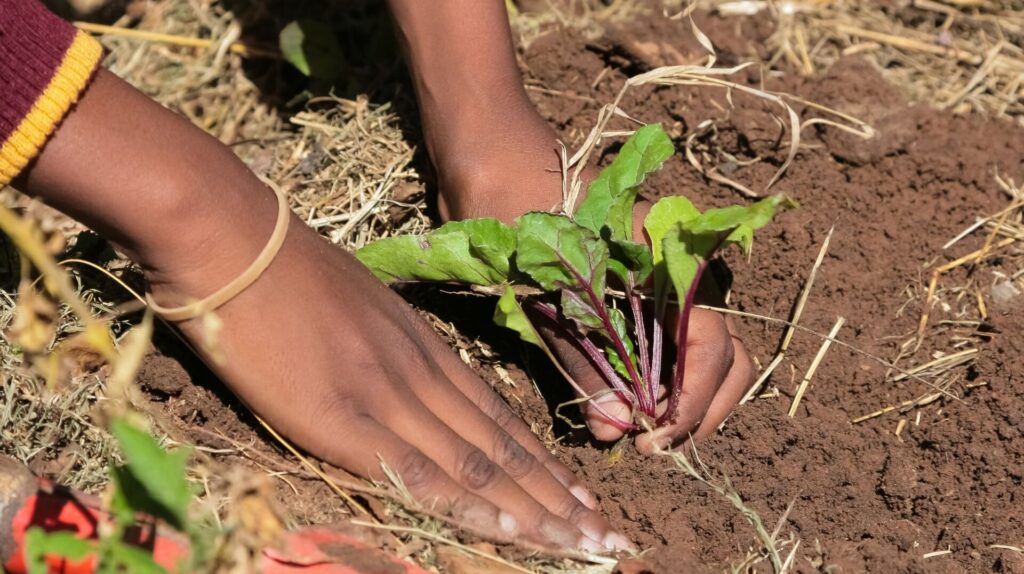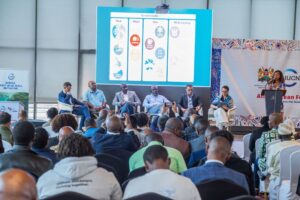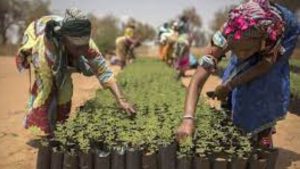For just 100 shillings, a soil test could boost Kenya’s harvests – but only if leaders act on the data.
The irony wasn’t lost on Cabinet Secretary Mutahi Kagwe as he stood before soil health experts at Nairobi’s World Bank summit this week. Here was Kenya’s top agriculture official, admitting he’d been farming blind for years—pouring money into the wrong fertilizers while his yields stagnated.
“My farm has already been used as an example,” Kagwe said with characteristic candor. “Yes, the PS perhaps painted me as a somewhat foolish farmer who wasted a lot of money, never tested my soils, and couldn’t figure out why my yields weren’t improving,” he joked.
His personal revelation—that soil testing transformed his farm’s productivity “like night and day”—captures Kenya’s broader agricultural awakening. But it also exposes a troubling reality: if the country’s agriculture minister was farming without data, what does that say about Kenya’s millions of smallholder farmers?
The statistics paint a stark picture. Sixty-five percent of Kenya’s soil is acidic and degraded, according to Nyeri Governor Mutahi Kahiga. The average Kenyan farmer is 64 years old. And despite government plans to spend KES 19 billion on fertilizer subsidies, much of it may be money down the drain without proper soil testing.
“There’s no point in spending even a single shilling if we don’t know whether we’re using the right fertilizer,” Kahiga emphasized, his voice carrying the weight of hard-earned wisdom.
The challenge extends beyond individual farms. Dr. Paul Kipronoh Rono, Principal Secretary at the Ministry of Agriculture, describes a system where “decisions like fertilizer distribution were made from centralized offices, without scientific input.” The result? A nationwide mismatch between soil needs and fertilizer distribution that Governor Kahiga compared to sending malaria drugs to malaria-free Nyeri while leaving malaria-endemic Kisumu empty-handed.
The Data Silo Problem
But here’s where the story gets complicated. Kenya isn’t lacking in soil data—it’s drowning in fragmented information. Government agencies, private companies, NGOs, and research institutions are all collecting soil data, but they’re not talking to each other.
“Let’s stop storing data in silos,” Governor Kahiga urged. “Instead, let’s work together to align findings and act.”
The fragmentation runs deep. In Nyeri County alone, over 3,000 soil tests have been conducted. Multiply that across 47 counties, add private sector data from companies like Yara (which has been collecting soil data for over a century), and factor in NGO and research institution datasets—and you have a treasure trove of agricultural intelligence locked away in institutional silos.
Dr. Medha Devare from the International Institute of Tropical Agriculture cuts to the heart of the matter: “How many people are open to sharing data? What about data standards? What is the code?”
The Innovation Challenge
The summit wasn’t just about identifying problems—it was about catalyzing solutions. Esther Van de Voort from Thryve Innovation CoLab (Yara) announced that her company was contributing proprietary soil data gathered over decades to the summit’s innovation challenge.
“We believe real progress in soil health comes from public-private partnerships where ideas meet implementation,” Van de Voort said. “Let’s move from discussion to delivery—together.”

But the path from data to delivery isn’t straightforward. Emmanuel Makau from Mercy Corps highlights a critical gap: “Innovation should benefit the farmer. To do this there is need to know the community needs to use data and inform decisions.”
It’s a reminder that technology without context is just expensive noise. Dr. Bernard Lagat from Nandi County poses the essential question: “Is the information available in easily digestible manner for the farmer in the village and in the right format?”
The Kenyan government is betting big on a unified approach. Dr. Rono outlined an ambitious national soil testing initiative that employs seven youth per ward—young people now fanning out across the country with soil testing equipment. Seven counties have been completed, with all 47 targeted for completion within six months.
“This work is already shaping how we distribute fertilizers—moving from blanket approaches to tailored recommendations based on actual soil nutrient data,” Dr. Rono explained.
It’s a massive undertaking that represents a fundamental shift from top-down agricultural policy to data-driven decision making.
“We’ve procured enough soil scanners and hired interpreters in Nyeri who go directly to farmers in the field. All the farmer needs to do is pay 100 shillings for a soil test. After that, they receive advice on the appropriate type of fertilizer to use,” notes Kahiga.
But success hinges on breaking down the data silos that have historically plagued the sector.
The AI Promise and Peril
Enter artificial intelligence—the buzzword du jour that promises to revolutionize everything from crop predictions to fertilizer recommendations. Girmaw Tadesse from Microsoft AI for Good Lab has been working on projects to improve Africa’s soil fertility through AI, but he urges caution.
“AI empowers decision makers and also allows us to scale soil fertility. But we need to apply the right AI models for our needs,” Tadesse warned.
The key word is “right.” AI can process vast datasets and identify patterns invisible to human analysts, but it’s only as good as the data it’s trained on. If Kenya’s soil data remains fragmented and inconsistent, AI becomes a sophisticated way to amplify existing problems.
The Incentive Problem
The elephant in the room is motivation. Why should private companies share valuable data they’ve spent millions collecting? Why should government agencies give up information that represents institutional power?
Marisa Soares from Yara International gets to the crux of the challenge: “We need to create value for all in the ecosystem. Right now the value is not clear to all.”

Summit participants agreed that stakeholders need to move “from data politics where competition is rife to open data networks.” But this transformation requires government intervention to create an enabling environment—potentially through incentivizing data sharers.
The question isn’t just technical; it’s fundamentally about trust, competition, and shared value creation in an ecosystem where information has traditionally meant power.
The Hummingbird Moment
Governor Kahiga invoked the story of Wangari Maathai’s hummingbird—the tiny bird that tried to put out a forest fire with drops of water while other animals fled. When asked why it bothered with such a futile gesture, the hummingbird replied: “I’m doing my part.”
It’s a metaphor that resonates deeply with Kenya’s soil health challenge. Individual efforts—whether a farmer testing soil, a county government investing in scanners, or a company sharing data—seem insignificant against the scale of the problem. But collective action could be transformational.
The Path Forward
So can Kenya build a unified soil data ecosystem? The technical pieces are falling into place. The government is investing in nationwide soil testing. Private companies are beginning to share data. Young people are embracing agricultural innovation. AI tools are becoming more accessible.
But success will require more than technology. It demands a fundamental shift in how Kenya’s agricultural stakeholders think about data—from proprietary asset to public good, from competitive advantage to collaborative tool.
“Technology, knowledge, energy, and passion—when combined—create a powerful ecosystem for agricultural productivity in our country, ” says CS Kagwe in his closing words.
The question is whether Kenya’s agricultural community can overcome decades of siloed thinking to create something unprecedented: a truly unified, farmer-centered soil data ecosystem that transforms not just yields, but livelihoods.
The hummingbird is already in flight. The question is whether others will join the effort before the forest burns down.
The Soil Health Summit continues through June 4th, with innovation challenge presentations and concrete action plans expected to emerge from the collaborative sessions.



